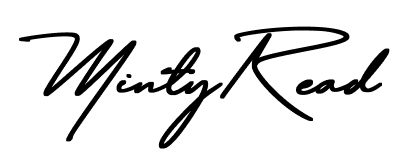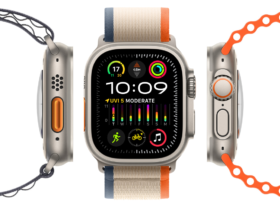Cervical pain, or neck pain, is one of the most common ailments in today’s sedentary, tech-driven lifestyle. Poor posture, prolonged screen time, and stress often contribute to discomfort in the neck area. While persistent or severe neck pain requires medical consultation, there are simple remedies and quick fixes you can try right now to alleviate discomfort. Here are ten effective strategies to help ease cervical pain quickly.
1. Gentle Neck Stretches
Stretching is one of the easiest and most effective ways to alleviate neck pain. Gentle stretches help relieve muscle tension, improve flexibility, and increase blood flow to the area. Here are a few basic stretches you can try:
- Neck Tilt: Slowly tilt your head toward your shoulder, hold for 15-30 seconds, then switch sides.
- Neck Rotation: Turn your head gently from side to side, holding for 10 seconds on each side.
- Forward Stretch: Gently lower your chin to your chest and hold for 15 seconds, feeling the stretch along the back of your neck.
These stretches can be done anywhere and provide immediate relief from muscle tightness.
2. Correct Your Posture
Poor posture is a leading cause of cervical pain, especially for those who spend hours sitting at a desk or looking down at their phones. One quick fix is to ensure that your posture is properly aligned:
- Keep your shoulders relaxed but not slouched.
- Ensure your back is straight, with your head aligned with your spine.
- Avoid hunching forward, especially when using devices like smartphones or laptops.
Small adjustments to your posture can reduce strain on your neck muscles and help alleviate pain over time.

3. Use Heat Therapy
Applying heat to the affected area is an excellent way to soothe neck muscles and promote relaxation. A warm towel, heating pad, or warm compress can provide relief. Heat therapy helps to increase blood circulation, relax stiff muscles, and reduce pain and inflammation.
Apply heat for 15-20 minutes on your neck and upper shoulders. Be sure to take breaks between applications to avoid overheating the area.
4. Cold Therapy for Acute Pain
If your cervical pain is caused by inflammation or injury, cold therapy can be a quick fix. Applying a cold compress, such as an ice pack wrapped in a towel, to the painful area can reduce swelling and numb the pain.
Apply cold therapy for 10-15 minutes, ensuring that there is a barrier between the ice and your skin to avoid frostbite. This method is particularly helpful for recent injuries or flare-ups.
5. Self-Massage Techniques
Massaging the neck area can provide immediate relief from pain by loosening tight muscles and improving blood flow. You can try simple self-massage techniques like kneading or gentle circular motions using your fingers. Focus on the areas that feel most tense, such as the base of your skull, sides of the neck, and upper shoulders.
For added relief, consider using a massage oil or lotion with calming ingredients like lavender or peppermint to enhance the soothing effect.
6. Change Your Sleeping Position
Poor sleeping posture is a common culprit behind cervical pain. If you often wake up with a stiff neck, it may be time to reassess your sleep position:
- Use a Supportive Pillow: Opt for a pillow that maintains the natural curve of your neck and spine. Memory foam or cervical pillows are designed to offer better neck support.
- Sleep on Your Back or Side: Sleeping on your stomach can strain the neck, so it’s best to sleep on your back or side for better alignment.
- Keep Your Spine Neutral: Ensure your spine is aligned properly by placing a pillow between your knees if you’re a side sleeper or under your knees if you sleep on your back.
Improving your sleep posture can prevent cervical pain and contribute to better overall spine health.
7. Take Breaks from Screens
Prolonged screen time, especially looking down at your phone, can lead to a condition known as “tech neck,” which causes strain on the neck muscles. One quick fix is to take regular breaks from screens to prevent strain and discomfort.
Every 30-40 minutes, take a break to move around, stretch, and realign your posture. When using your phone, hold it at eye level to reduce the angle at which you’re tilting your head.

8. Practice Deep Breathing
Stress often manifests physically, leading to muscle tension, particularly in the neck and shoulders. Deep breathing exercises can help relieve cervical pain by reducing stress and promoting relaxation. Try this simple technique:
- Sit or lie down in a comfortable position.
- Close your eyes and take a deep breath in through your nose for a count of four.
- Hold your breath for a count of four.
- Exhale slowly through your mouth for a count of six.
- Repeat this for five to ten minutes.
Deep breathing not only helps relax your neck muscles but also calms your mind, reducing overall tension and discomfort.
9. Hydrate and Stay Active
Dehydration can contribute to muscle stiffness and pain, so it’s essential to stay hydrated throughout the day. Drinking plenty of water can help maintain the health of your muscles and joints, including those in your neck.
In addition to hydration, staying active with regular exercise can help prevent cervical pain. Low-impact exercises like walking, swimming, or yoga can improve flexibility, strengthen muscles, and reduce stiffness. Exercise also improves posture and circulation, which can further prevent and relieve neck pain.
10. Over-the-Counter Pain Relief
For immediate relief from more severe cervical pain, over-the-counter (OTC) pain relievers like ibuprofen or acetaminophen can be effective. These medications help reduce inflammation and provide temporary pain relief. Always follow the recommended dosage and consult with a healthcare provider if you have any underlying conditions or concerns.
Additionally, topical pain relief creams or gels containing menthol or capsaicin can offer targeted relief when applied directly to the neck and shoulders.
Conclusion
Cervical pain is a common problem, but it doesn’t have to derail your day. These quick fixes, from gentle stretches to heat therapy, can provide fast relief and help prevent further discomfort. It’s essential to pay attention to posture, take breaks, and maintain a healthy lifestyle to prevent chronic pain. While these remedies can offer temporary relief, it’s always a good idea to consult with a healthcare professional if your cervical pain persists or worsens, as it may be a symptom of a more serious underlying condition.
By incorporating these tips into your daily routine, you can reduce the frequency and intensity of neck pain, allowing you to move through your day with greater ease and comfort.





















Leave a Reply